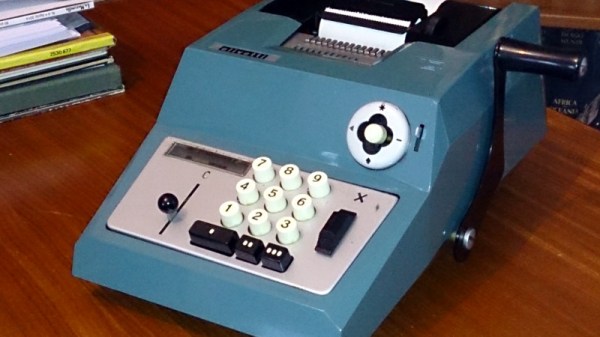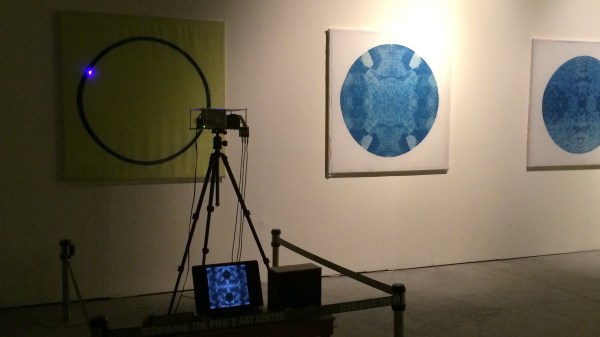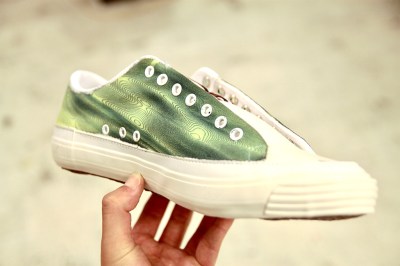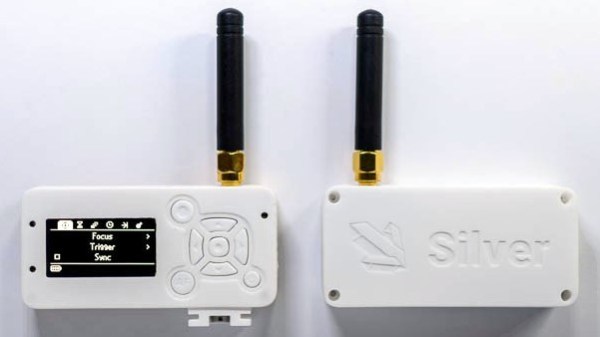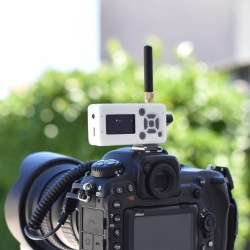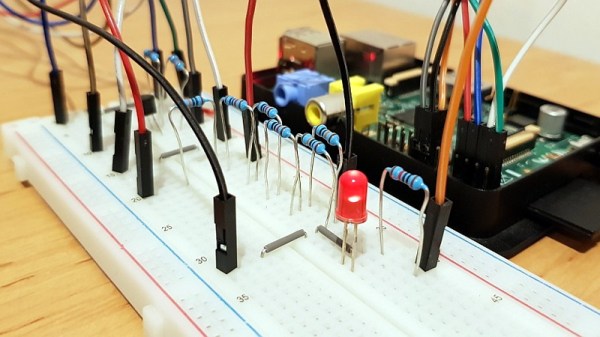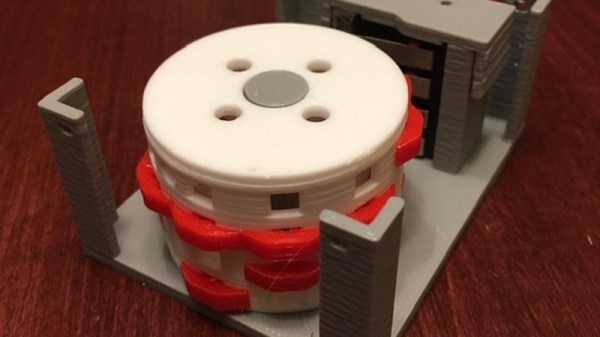Last month we carried a piece looking at the development of the 8-bit home computer market through the lens of the British catalogue retailer Argos and their perennial catalogue of dreams. As an aside, we mentioned that the earliest edition from 1975 contained some of the last mechanical calculators on the market, alongside a few early electronic models. This month it’s worth returning to those devices, because though they are largely forgotten now, they were part of the scenery and clutter of a typical office for most of the century.

Somewhere in storage I have one of the models featured in the catalogue, an Olivetti Summa Prima. I happened upon it in a dumpster as a teenager looking for broken TVs to scavenge for parts, cut down a pair of typewriter ribbon reels to fit it, and after playing with it for a while added it to my store of random tech ephemera. It’s a compact and stylish desktop unit from about 1970, on its front is a numerical keypad, top is a printer with a holder for a roll of receipt paper and a typewriter-style rubber roller, while on its side is a spring-loaded handle from which it derives its power. It can do simple addition and subtraction in the old British currency units, and operating it is a simple case of punching in a number, pulling the handle, and watching the result spool out on the paper tape. Its register appears to be a set of rotors advanced or retarded by the handle for either addition or subtraction, and its printing is achieved by a set of print bars sliding up to line the correct number with the inked ribbon. For me in 1987 with my LCD Casio Scientific it was an entertaining mechanical curiosity, but for its operators twenty years earlier it must have represented a significant time saving.
The history of mechanical calculators goes back over several hundred years to Blaise Pascal in the 17th century, and over that time they evolved through a series of inventions into surprisingly sophisticated machines that were capable of handling financial complications surprisingly quickly. The Summa was one of the last machines available in great numbers, and even as it was brought to market in the 1960s its manufacturer was also producing one of the first desktop-sized computers. Its price in that 1975 Argos catalogue is hardly cheap but around the same as an electronic equivalent, itself a minor miracle given how many parts it contains and how complex it must have been to manufacture.
We’ve put two Summa Prima videos below the break. T.the first is a contemporary advert for the machine, and the second is a modern introduction to the machine partially narrated by a Brazilian robot, so consider translated subtitles. In that second video you can see something of its internals as the bare mechanism is cranked over for the camera and some of the mechanical complexity of the device becomes very obvious. It might seem odd to pull a obsolete piece of office machinery from a dumpster and hang onto it for three decades, but I’m very glad indeed that a 1980s teenage me did so. You’re probably unlikely to stumble upon one in 2019, but should you do so it’s a device that’s very much worth adding to your collection.
Continue reading “Retrotechtacular: Mechanical Arithmetic For The Masses”

